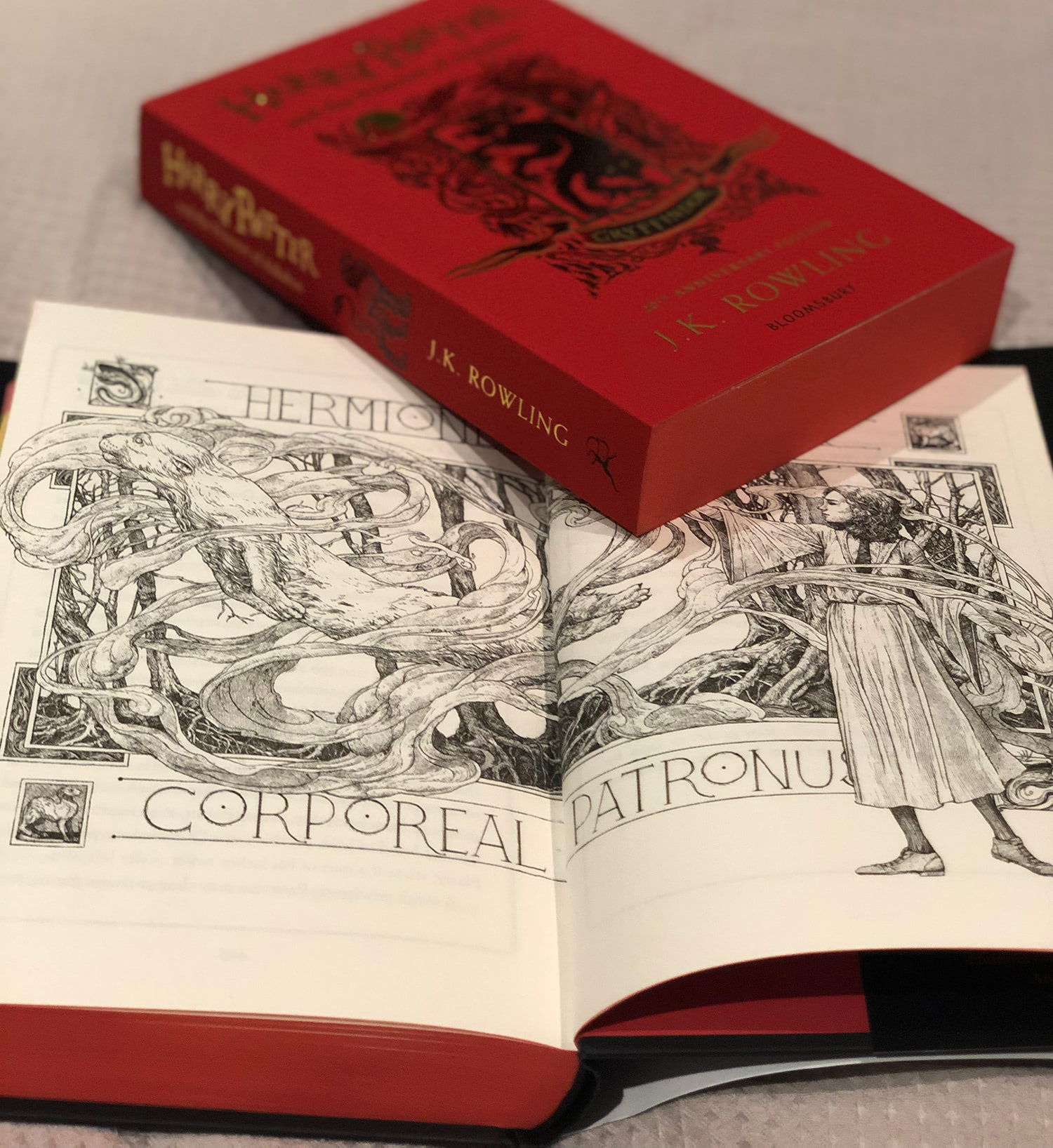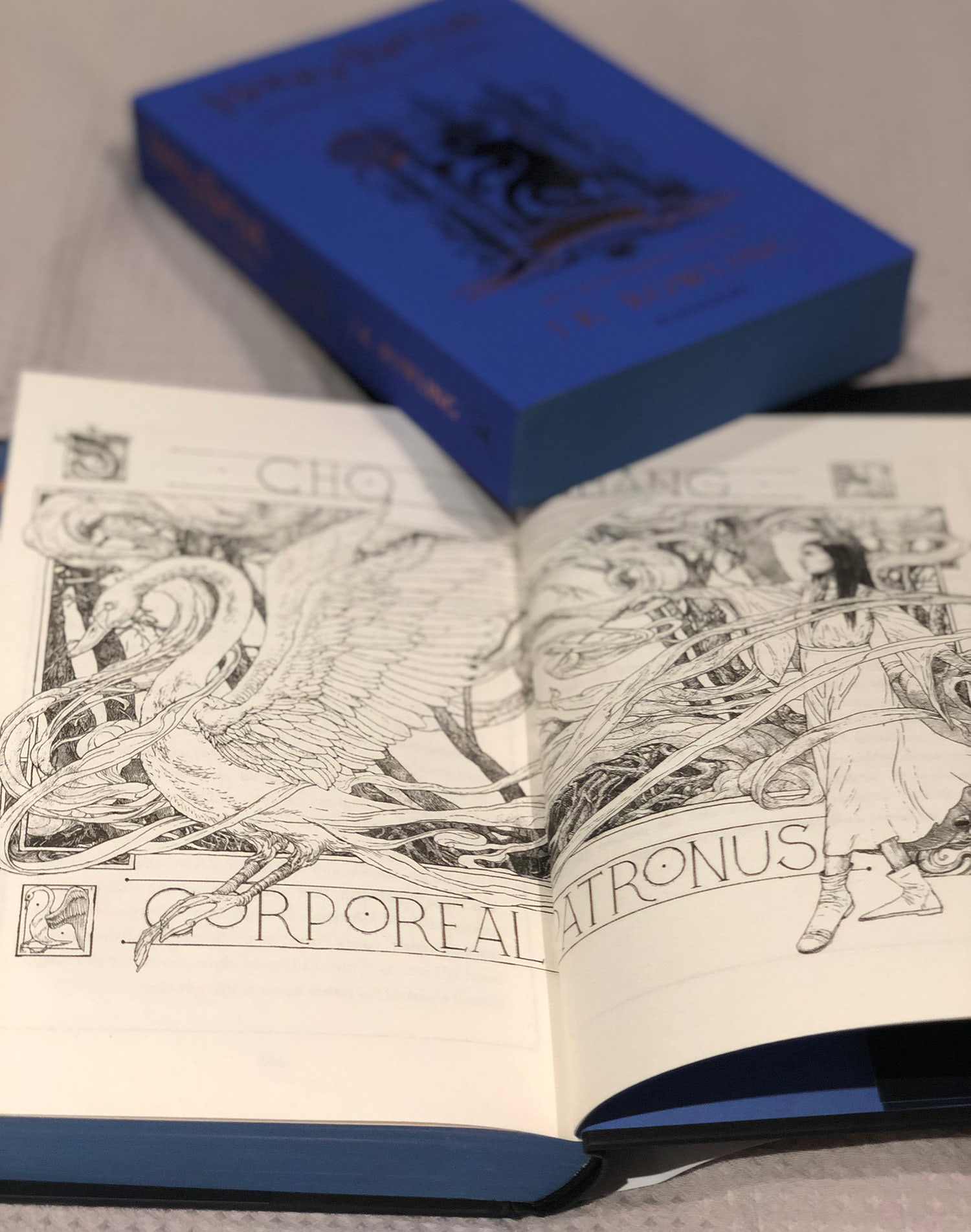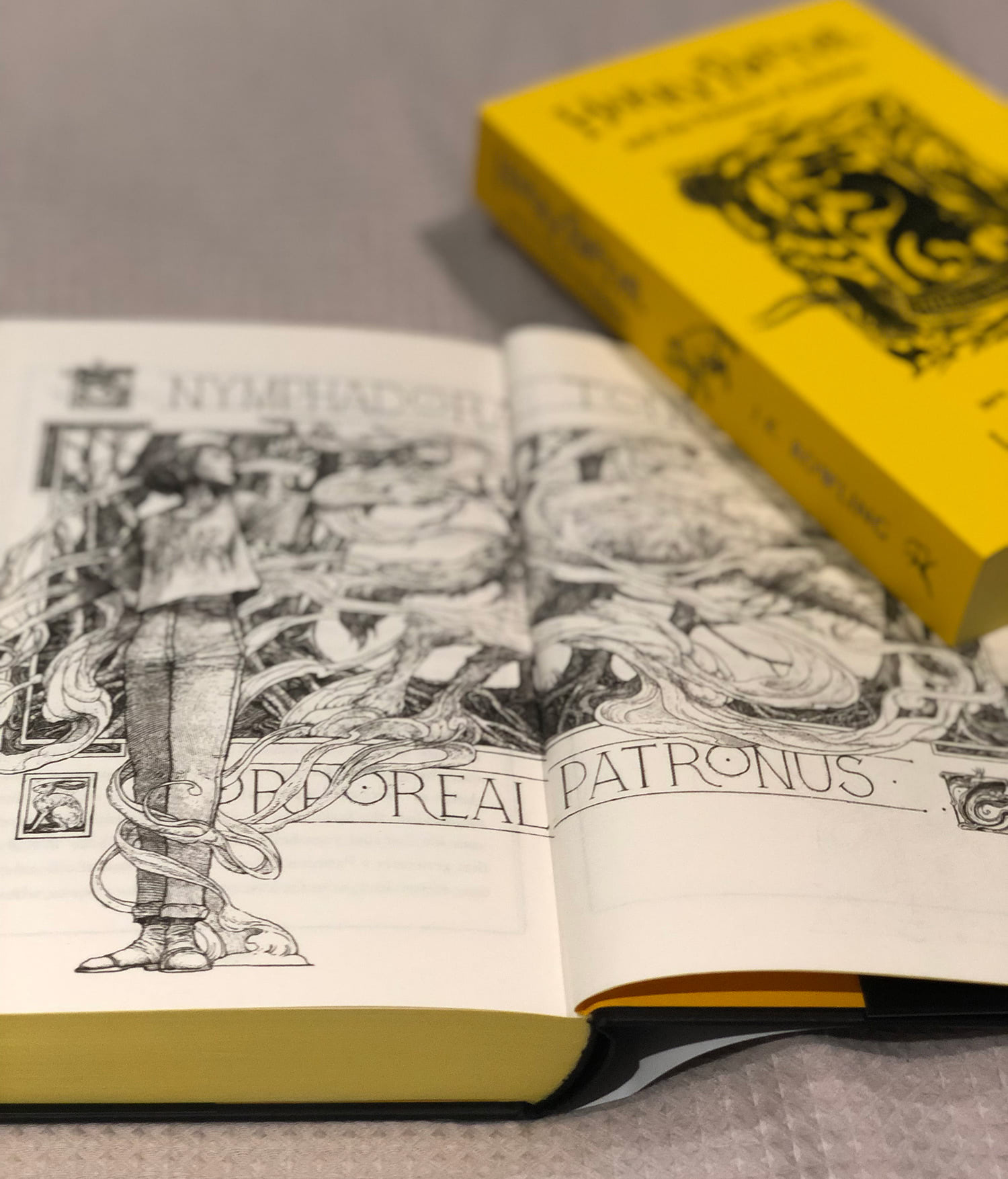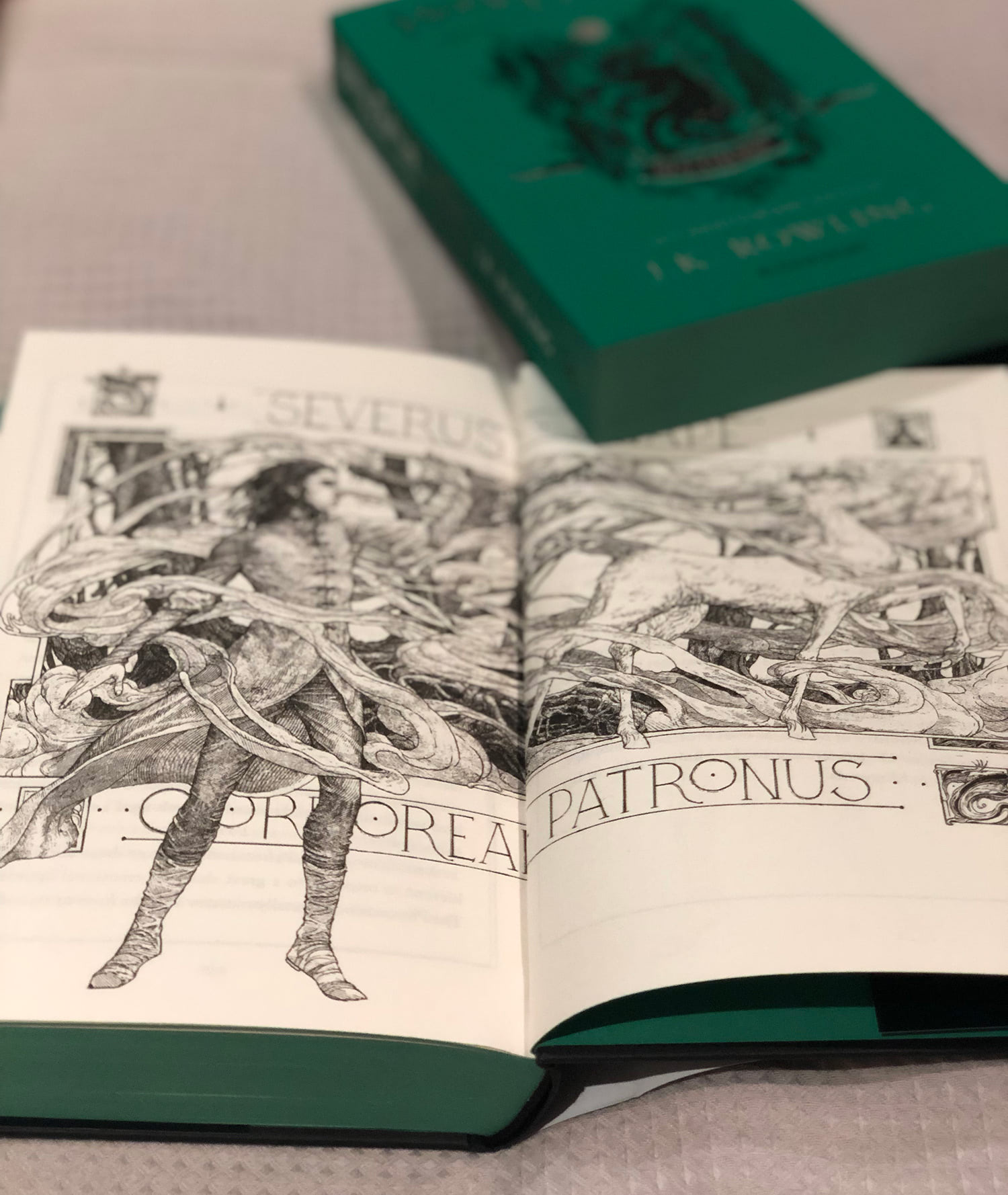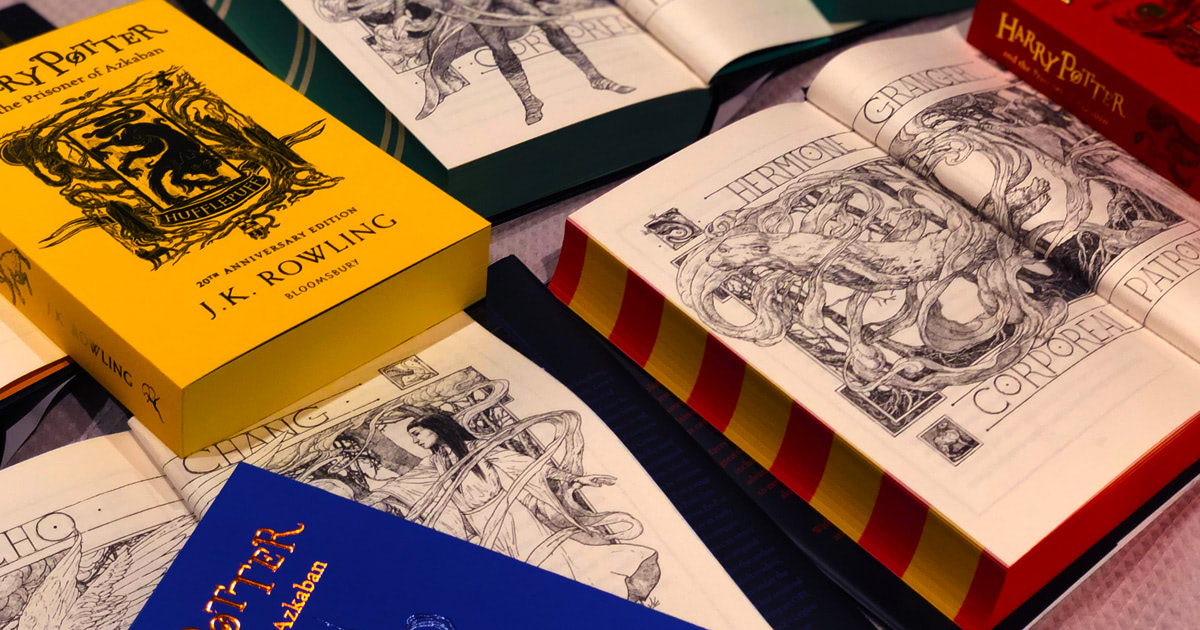
Harry Potter and the Prisoner of Azkaban holds a special place in this author’s heart. Not only is it my favourite of the seven ‘Potter’ books, but the year of publication — 1999 — was the year I was first swept up by Boy Wizard mania. Twenty years later, a new generation of fans (plus a decent sprinkling of us nostalgic first-genners) have the opportunity to relive Harry’s third story with Bloomsbury’s gorgeous 20th anniversary house editions. (Heads up: I’m a Ravenclaw.)
Every ‘Potter’ fan has at some stage pledged their loyalty to one of the four Hogwarts houses, and Bloomsbury’s objective here is to appeal to that house pride. The four ‘Azkaban’ house editions are the third in the UK publisher’s twenty-year celebratory releases, following Philosopher’s Stone in 2017 (first published in 1997) and Chamber of Secrets in 2018 (1998). Whether your loyalties lie with Gryffindor, Ravenclaw, Hufflepuff or (hiss) Slytherin, you can show off that house pride by owning a book adorned with unique house-coloured jacket artwork, internal illustration and iconography by artist Levi Pinfold.
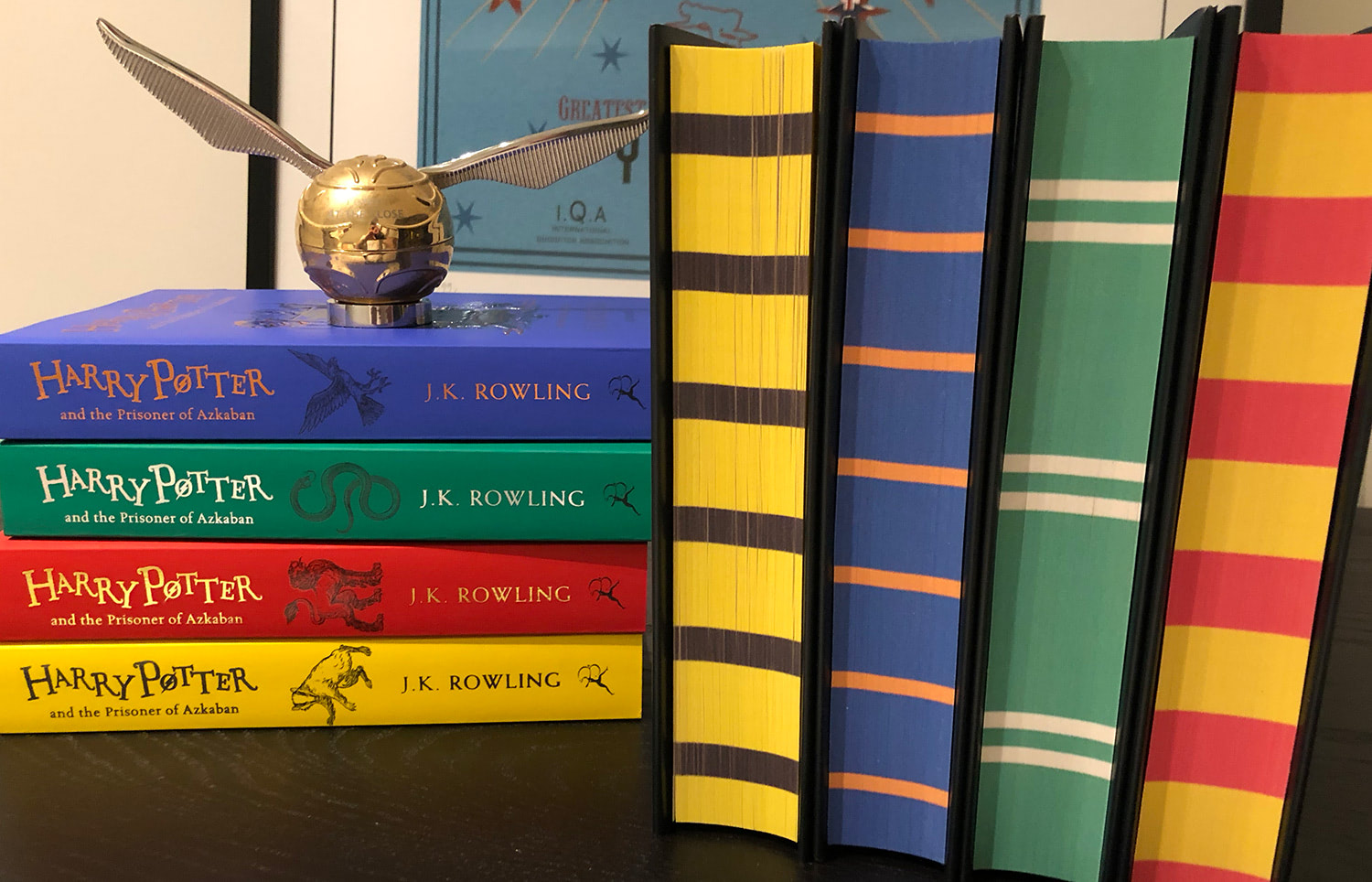
Like the two preceding novels, there are eight ‘Azkaban’ house editions to collect (yes, the paperback and hardback editions have different finishes). Cleverly, Bloomsbury appear to be alternating the cover styles for each book. Like Philosopher’s Stone, the hardback editions of Harry’s third story are wrapped in a predominately black jacket with embossed house-coloured artwork and embellishment. Similarly, the paperback editions have reversed (full colour) styling. This is no printing error: the idea is that when all seven books (in 2027, no less) are lined up on a shelf the alternating spines will replicate a Hogwarts scarf. That’s pretty neat … and terrific marketing.
Of course, the main draw card of these new editions (aside from any excuse for a series re-read) is English artist and children’s book author Levi Pinfold’s gorgeous artistic contributions. Pinfold has illustrated all twelve house editions released to date, and his intricate line drawings give these 20th anniversary editions a wonderful signature aesthetic. For Philosopher’s Stone, Pinfold designed house crests to differentiate each edition. For Chamber of Secrets, those covers were decidedly more serpentine and included a number of intricate house-themed easter eggs. For ‘Azkaban’, Pinfold has taken that easter egg motif further.
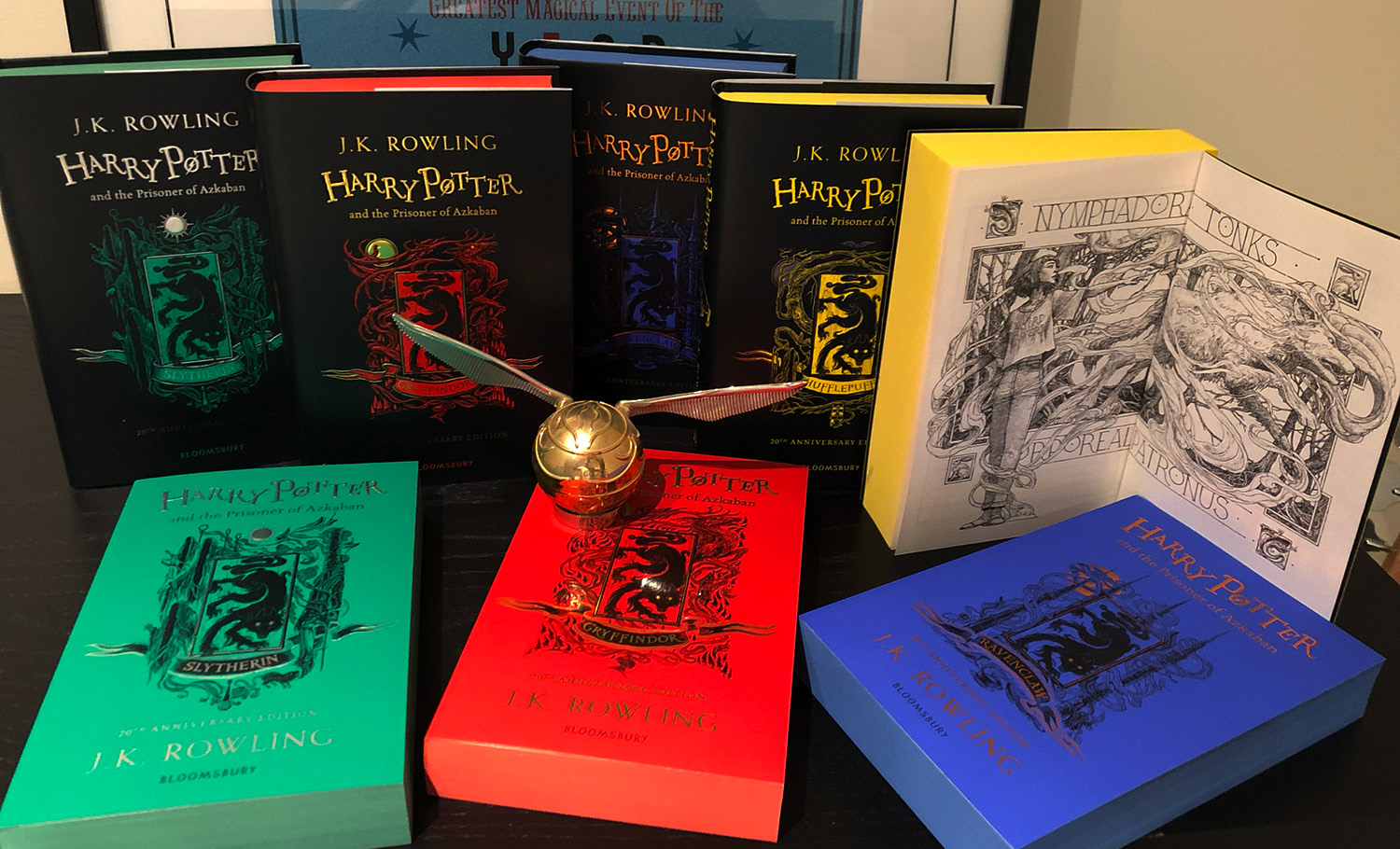
Each cover shares a common figure in the canine Animagus form of Sirius Black, while hidden among a vigentte of ornate branches and towers are subtle references to Hogwarts alumni. Among them are the lone figure of Gryffindor’s Rubeus Hagrid; a nod to Ravenclaw and Seer Sybill Trelawney; Hufflepuff’s Quidditch Captain Cedric Diggory; and executioner and ex-Slytherin Walden Macnair. The integration of this iconography is incredibly clever (case in point: the Hufflepuff edition has a little Knight Bus because the purple triple-decker was the brainchild of ex-Minister for Magic and former Hufflepuff Dugald McPhail). You really need to study these books up close to appreciate Pinfold’s craft.
Excitingly, there’s much internal artwork and embellishment to appreciate as well. Pinfold’s earlier books have included detailed drawings of house common rooms, founders (repurposed in these editions too), and professors, and Prisoner of Azkaban is no different. Inside each house edition is a sweeping portrait of a famous ‘Potter’ character casting the Patronus Charm — a spell introduced in Harry’s third story. Severus Snape, Hermione Granger, Nymphadora Tonks and Cho Chang are all beautifully depicted with their ghostly protective animal guardians. These pieces would make wonderful standalone prints.
As for new content, each edition includes additional information about the respective Hogwarts house, as well as an interesting spread about the Patronus Charm. Those extras also vary from house to house, describing in much detail Rowling’s clever symbolism between character and animal. The Ravenclaw edition describes Cho Chang’s Patronus (‘a swan, whose grace and strength are apt for the talented Ravenclaw seeker’), while the yellow Hufflepuff edition compares Ernie MacMillan’s boar Patronus to his ‘staunch defence of friends’. Illustrations of the Hogwarts founders and a map of the castle and grounds are also repurposed from earlier house editions, so new collectors aren’t missing out.
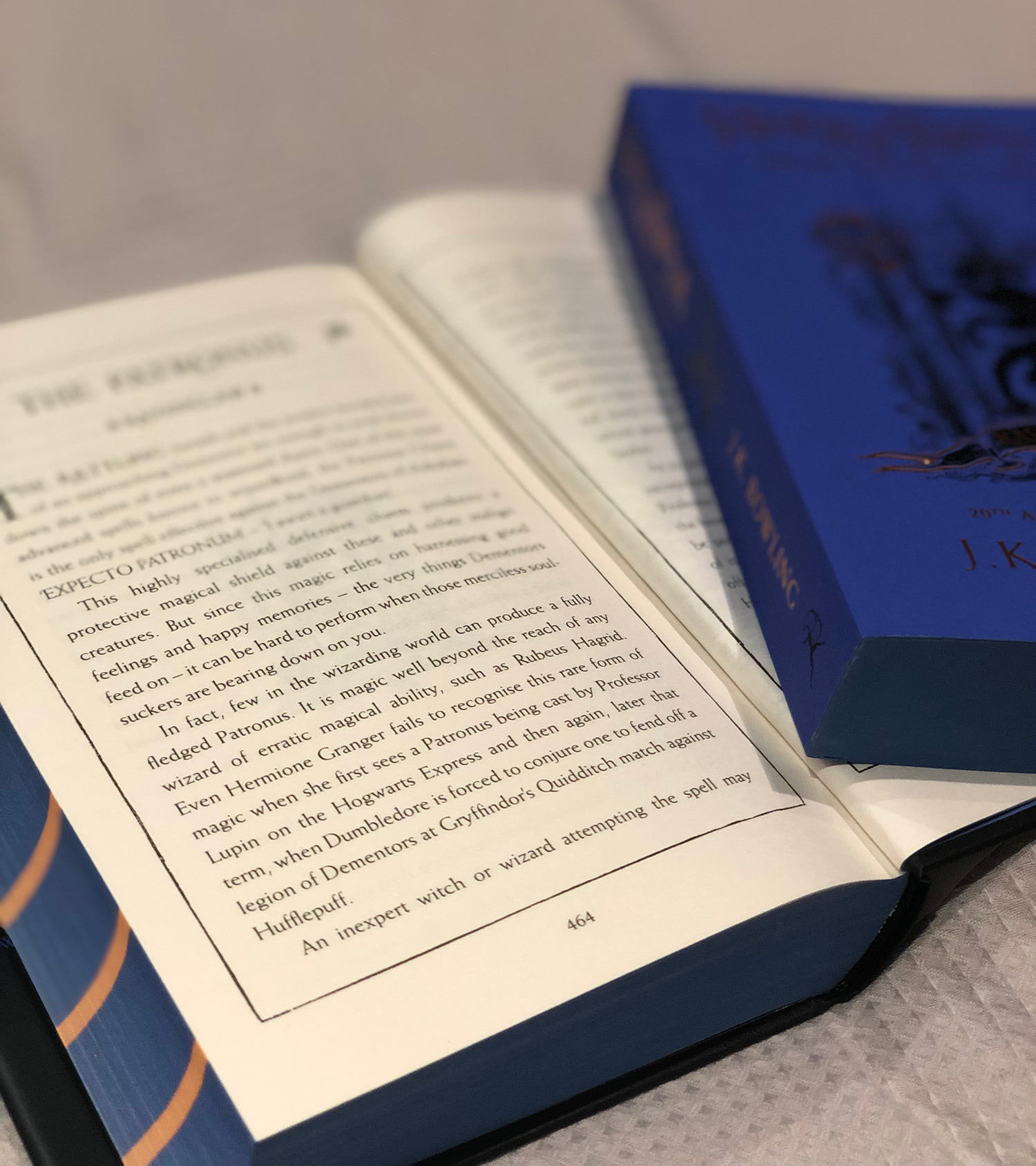
These house editions have a number of little touches worth mentioning too. The edges of the hardback edition are sprayed in alternating primary and secondary Hogwarts house scarf colours. For the Gryffindor edition those primary red straps are bolder, while the Slytherin pattern uses lighter straps in clusters of two, mimicking the real-life knitting pattern. In the copy itself there’s different typeface use for letters, memos and handwriting. Hagrid’s scrawl is a messy, cursive typeface, while Ministry communications mimic their official tone. The US editions have always included these more playful typographic motifs, but this is new to the UK editions (which, sans chapter art, have always felt a little devoid of personality).
Of course, I must acknowledge a nagging cynical voice inside me that wants to label these new editions as nothing more than opportunist cash grabs. By 2027 there’ll be fifty-six (!) house editions to collect. If you want to explore each piece of artwork in the detail it deserves, you’ll need them all. However, the craftsmanship, attention to detail and quality of illustration really elevate these books above the status of shameless reprint. Levi Pinfold is a master of vignette illustration, and the art direction is truly beautiful. I can imagine fans choosing to collect only their favourite house in either the paperback or hardback stream, making seven novels a much more attractive and affordable proposition.
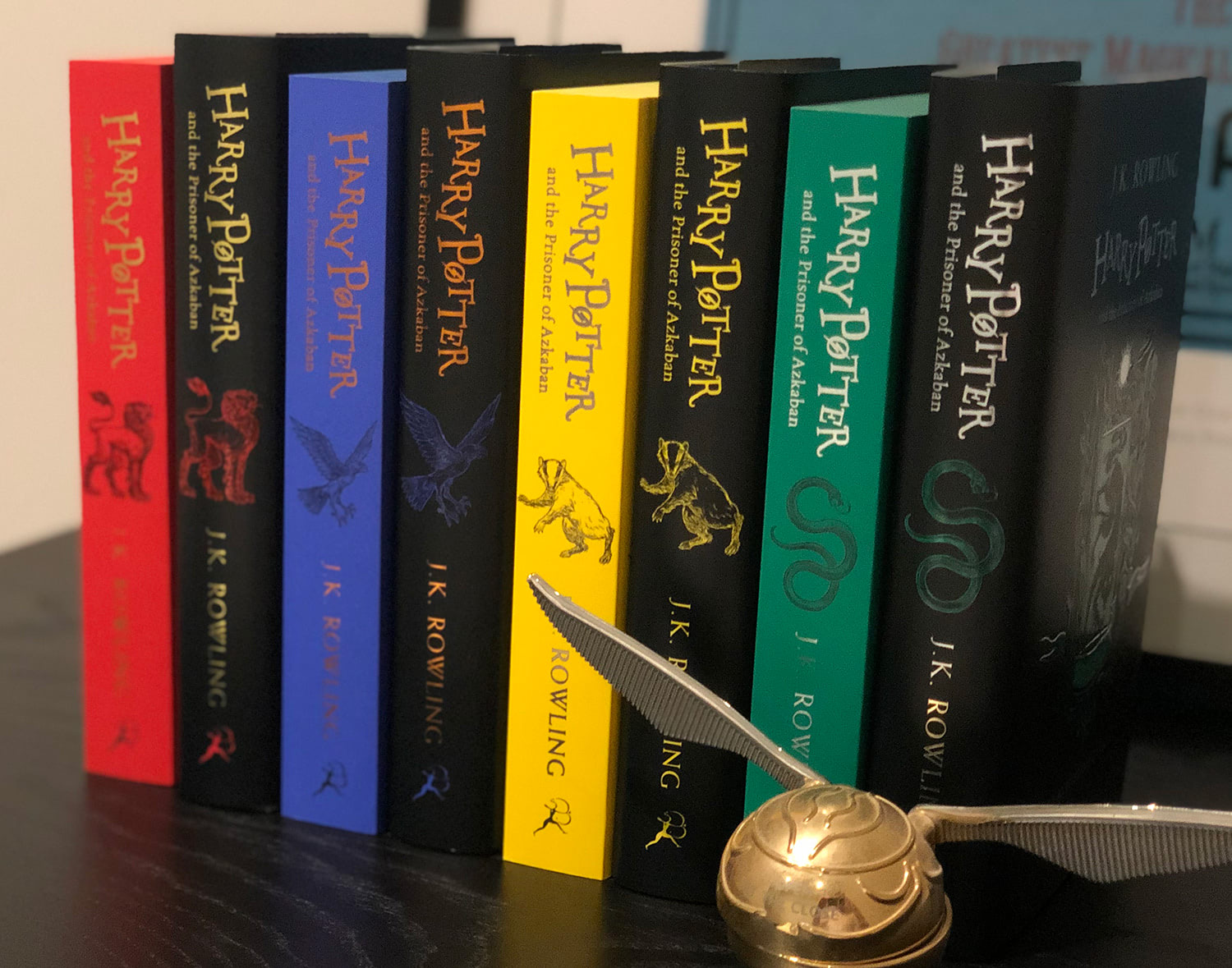
Luckily, J.K. Rowling waited only a year to publish the fourth Harry Potter novel, July 2000’s Goblet of Fire. That means we’ll see another set of anniversary house editions and new illustrative nods to the finest of Gryffindor, Ravenclaw, Hufflepuff and Slytherin next year. Things will sadly slow down from there — there’s a mammoth three-year gap between the fourth and fifth novels (believe me, the wait was painful at the time). Until then, I have much shelf space to conjure up — there’s eight new versions of Prisoner of Azkaban coming home today and a raging housemate battle between Gryffindor and Ravenclaw for top spot. (Team blue and bronze, represent.)
***
The Prisoner of Azkaban house editions are available from June 13 (today) in store and online in both paperback and hardback:
